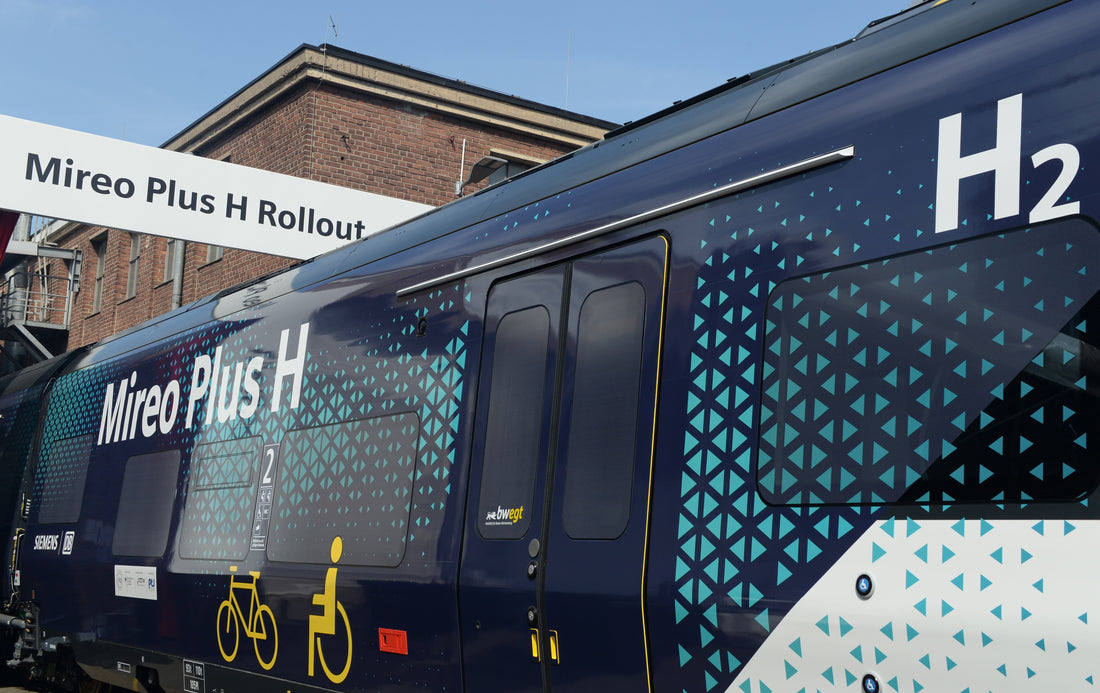As the world shifts toward sustainable transport, hydrogen-powered trains are emerging as a significant innovation, offering a cleaner alternative to diesel and electric rail systems.
In the United States, the first zero-emission hydrogen train—called the Zero Emission Multiple Unit (ZEMU)—has been launched in California, with full operations set to begin in 2025. This marks a milestone in the U.S.’s journey toward decarbonized rail travel.
Other countries are ahead of the curve. Germany, for example, introduced the world’s first hydrogen-powered train back in 2018. France has committed to rolling out hydrogen trains on regional lines by 2025, and the UK is conducting trials as part of its goal to phase out diesel trains by 2040. These initiatives underscore the growing recognition of hydrogen's potential to revolutionize rail transport.
Hydrogen vs. Electric Trains
Both hydrogen and electric trains are emissions-free at the point of use, but their environmental impact depends on how their energy is produced. Electric trains, although clean during operation, still contribute to emissions if powered by non-renewable sources. They also require costly infrastructure, including power lines and substations.
On the other hand, hydrogen trains are self-sufficient, generating their own power through fuel cells or combustion engines, making them more flexible in areas lacking electrified rail networks.
Hydrogen also stores more energy per unit than batteries, meaning hydrogen-powered trains can travel longer distances without refueling. However, challenges remain, such as producing “green hydrogen” (hydrogen generated from renewable energy) at scale, and building the necessary infrastructure to store and safely transport this highly flammable fuel.
Why Hydrogen Trains Matter
Hydrogen offers a promising future for public transport, especially in regions where electrification is difficult or expensive. Trains that run on hydrogen can help reduce global transport emissions, which are a major contributor to climate change. The benefits are clear: they produce no emissions, require less infrastructure than electric trains, and hold potential for widespread adoption.
There are Still Hurdles to Overcome
The volatility of hydrogen means strict safety measures must be implemented throughout the supply chain. A UK study identified fire hazards as a major concern, prompting the development of safety standards for hydrogen tanks and the trains themselves. Despite these challenges, the push for hydrogen trains is gaining momentum.
An Important Step Towards Decarbonizing Transportation
The debut of hydrogen-powered trains in the U.S. and their ongoing use in Europe show that a greener future for rail transport is within reach. Hydrogen technology has the potential to revolutionize how we think about transportation, helping to reduce the carbon footprint of public transit on a global scale.
At Weightless Clean, we believe in supporting innovations that align with a more sustainable world. Hydrogen trains are just one example of how technological advancements can make a difference, helping to reduce the environmental impact of travel.
If you'd like to reduce your carbon footprint and plastic-use, check out Weightless Laundry and Detergent Sheets. They weigh much less than liquids and pods, which means they make way less transportation emissions.

